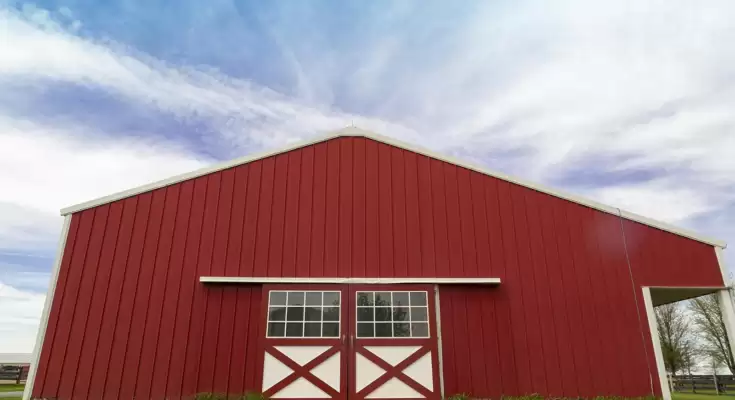When running a farm or ranch, there is already a lot of work to do during the day without having to add in a lot of maintenance for your barn. If you are looking to decrease your workload, one way to do that is to build a low-maintenance barn. While it might cost a little more upfront, it can be worth it in the amount of time and money it saves you in the long run. In this article, we will look at how to build a low-maintenance barn of your own.
Choosing Your Building Materials
The first thing to do is decide what type of building material you want for the barn’s structure.
Wood might be the option that you are most likely to reach for, but it is not the most durable building material available, and wood tends to require a lot of maintenance. Wood rots, gets bloated, and is easily damaged by pests and rodents. If you have horses, you have probably had them kick a hole in your barn at some point; there is a lot of power in their legs. With wood, you will be looking at a high-maintenance barn.
The best building material for a low-maintenance barn is steel. It is the strongest building material in the world, so it can withstand the damage of your animals and the elements. Steel requires little maintenance to keep it intact, and it is better for the environment than a wooden pole barn.
Low-maintenance Barn Flooring
Animal hooves are rough on flooring, making it difficult to choose one that can stand up to them and remain clean. The floor needs proper drainage, so it is best to set it up on a gentle, gradual slope that runs down to a drain system. This will ensure that water or urine drains and runs outside instead of lingering in each stall.
The most common barn flooring materials are:
- Asphalt
- Concrete
- Clay
- Dirt
- Grid Mats
- Sand
- Wood
In the aisles, the best flooring option for your barn is popcorn asphalt. Popcorn asphalt can help keep the floor dry and giveboth humansand animals some traction. It is also easy to keep clean.
In the stalls, you need a flooring material that will support your animals’ legs, provide good drainage and be comfortable for them to lie down on. Dirt is the most affordable option for flooring, but on its own, it will need more drainage. Dirt must be paired with a layer of gravel or stone to ensure it drains properly. Mats are a popular option, especially since you can put them on top of your existing flooring. They can be more expensive, but they are low-maintenance and easy to keep clean.
Include Ventilation
Make sure, when planning the layout of your low-maintenance barn; you plan out good ventilation. You want to ensure your animals are getting fresh air, keep out the smells, prevent mold from growing, and ensure your animals stay healthy. While mold will not be able to grow on the steel itself, it will still be able to grow on the hay or any organic flooring. Install some ceiling fans and exhaust fans, and keep the doors open during the day to ensure you have the best airflow.
Automatic Water System
You can install an automatic water system for your animals to make chores in your barn even more low-maintenance. You will need to replace their water buckets daily, but it will cut down on the amount of time you spend getting water for your animals every day. If your barn is in a steel building, you can have the plumbing put inside the walls, which will protect the pipes from your animals. It will also help prevent the pipes from freezing in the winter since your building will be insulated.
Final Thoughts
The key to any low-maintenance barn is the building itself. By choosing a steel building for your low-maintenance barn, you will free up more time in your days to care for your animals without worrying about wood planks rotting or concrete chipping.
About the Author
Auz Burgeris a freelance writer and an expert insteel buildings. She has a BA from Washington State University and has been writing and editing professionally for over a decade.
